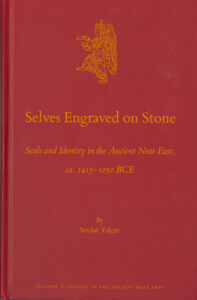Serdar Yalçin
Contact
Art & Art HistoryStudio Art 102 651-696-6279
651-696-6266 (fax)
artdept@macalester.edu

Associate Professor of Art History (on leave Academic Year 2024-25)
Art and Archeology of Ancient Western Asia and the Mediterranean World
Art Commons 208
651-696-6924
syalcin@macalester.edu
Serdar Yalçin is a specialist in the art and archeology of ancient Western Asia and the Mediterranean world with a special focus on the Bronze and Iron Age cultures of Mesopotamia, Syria and Anatolia. His research interests include art and identity, gender and representation, artistic interconnections in the ancient world, and western antiquarianism and the formation of the European and American antiquities collections. Prior to Macalester, Dr. Yalçin taught undergraduate and graduate level courses in ancient and western art history, and museum studies at Columbia University and Parsons School of Design in New York. He has been awarded fellowships and awards from the Metropolitan Museum of Art, The Morgan Library and Museum, Netherlands-Flemish Institute in Cairo, and the Research Center for Anatolian Civilizations of Koç University in Istanbul. His recent book, Selves Engraved on Stone: Seals and Identity in the Ancient Near East, ca. 1415-1050 BCE (Brill, 2022), explores the ways in which different but often intersecting aspects of identity, such as religion, gender, community and profession, were constructed through the material, visual, and textual characteristics of seals from Mesopotamia and Syria.
While his research concentrates on visual and material cultures of ancient Western Asia, Dr. Yalçin covers a broader territory in his teaching, offering courses on the arts of ancient Egypt, Greece and Rome, medieval Europe and Islamic lands. In addition to his teaching and research, Dr. Yalçin is also an active member of the Mapping Mesopotamian Monuments and Tarsus-Gözlükule Excavation Projects.
B.A. Boğaziçi University, Istanbul (2002)
M.A. Boğaziçi University, Istanbul (2005)
Ph.D. Columbia University, New York (2014)
Course offerings include:
ART 160 – Introduction to Art History I
ART 280 – Art and Architecture of Ancient Egypt
ART 281 – Art and Architecture of Ancient Near East
ART 282 – Art and Architecture of the Islamic World
ART 283 – Art and Architecture of Ancient Greece and Rome
ART 284 – Art and Architecture of Byzantium and Medieval Europe
ART 285 – Making of Imperial Cities: Babylon, Rome, and Constantinople
ART 380 – Art and Iconoclasm from the Ancient World to Early Modern Era
Publications:
Selves Engraved on Stone: Seals and Identity in the Ancient Near East, ca. 1415-1050 BCE. Culture and History of the Ancient Near East 129. Brill, 2022.
“Orientalizing Architecture: Prinias, ‘Ain Dārā and Hittite Echoes in Greek Architectural Sculpture,” Studi Micenei ed Egeo-Anatolici, Nuova Serie (SMEA NS) 6 (2020): 133-164.
“Men, Women, Eunuchs, etc.: Visualities of Gendered Identities in Kassite Babylonian Seals (ca. 1470-1155 BC),” Bulletin of the American Schools of Oriental Research 376 (2016): 121–150.
“A Re-evaluation of the Late Bronze to Early Iron Age Transitional Period: Stratigraphic Sequence and Plain Ware of Tarsus-Gözlükule”. In A. K. Yener (ed). Across the Border: Late Bronze-Iron Age Relations between Syria and Anatolia, Proceedings of a Symposium held at the Research Center of Anatolian Studies, Koç University, Istanbul May 31–June 1, 2010, 195-211. Peeters, 2013.
“A Study of Cultural Interaction in the Eastern Mediterranean during the Late Bronze Age: Adaptation of the Winged Sun Disc by the Hittites.” In K. Duistermaat & I. Regulsky (eds), Intercultural Contacts in the Ancient Mediterranean: Proceedings of the International Conference at the Flemish-Nederlandish Institute in Cairo, October 26-29, 2008, 509-523. Peeters, 2011.
